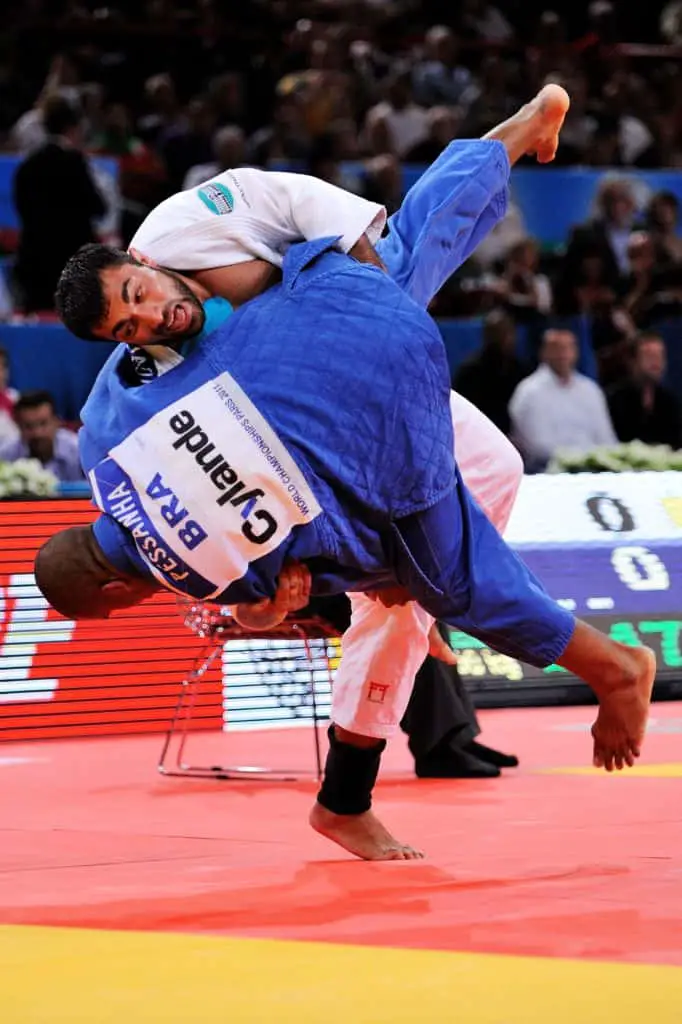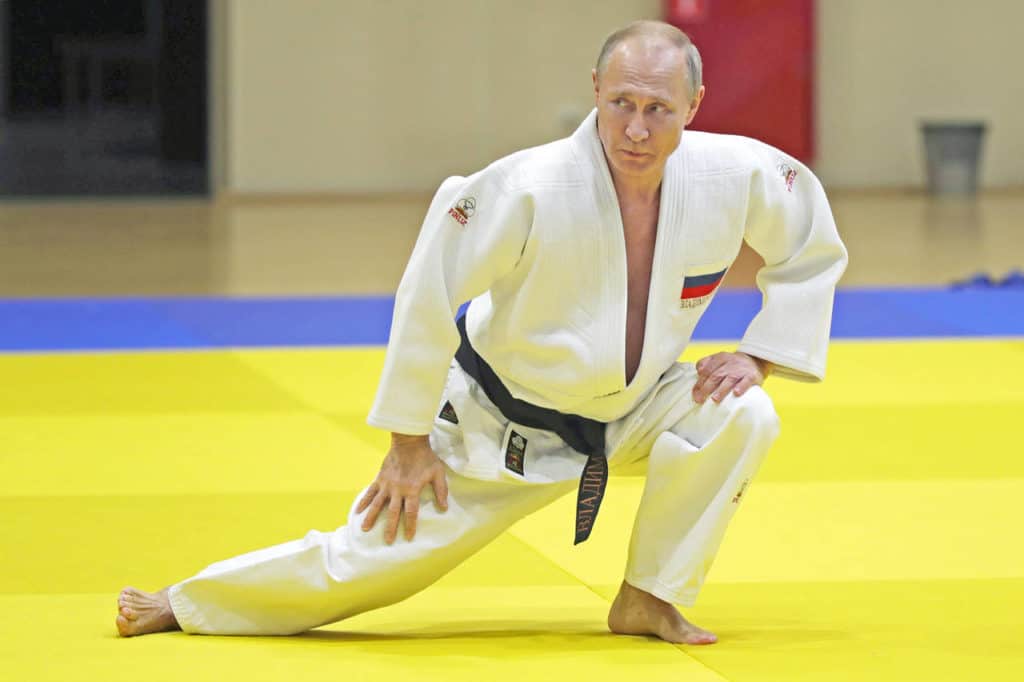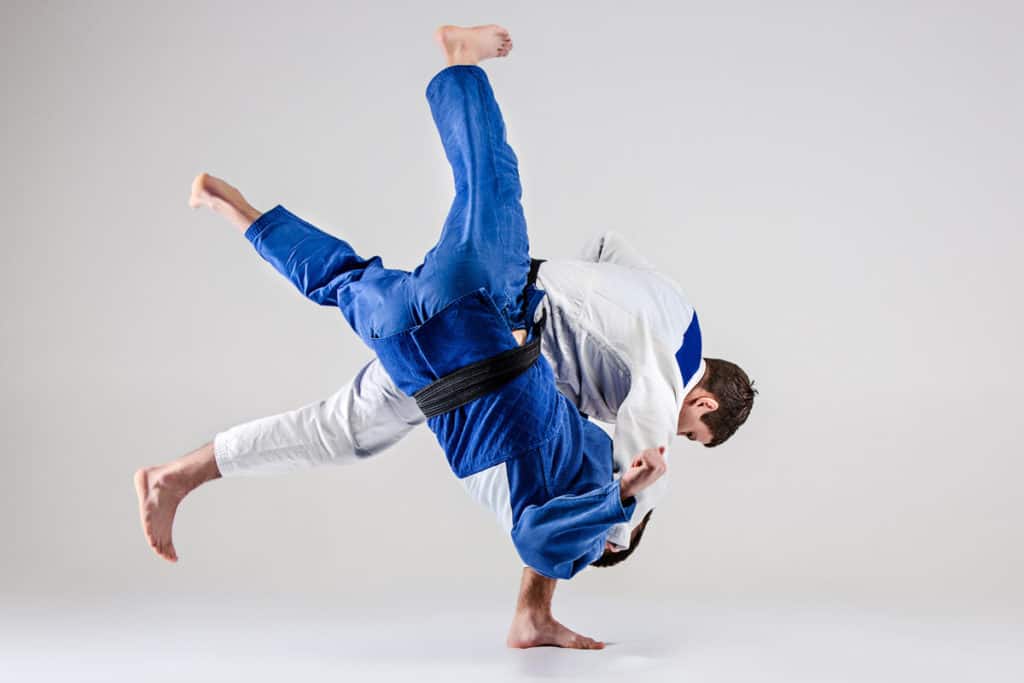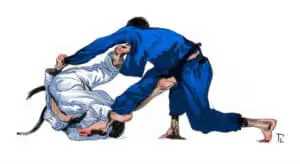
Judo is a sport filled with all kinds of takedowns but if you have watched a Judo match recently you will have noticed that it is primarily an upper body throwing fest. Is this a strategy used by Judokas or are lower leg attacks prohibited?
Are Double Leg Takedowns Allowed In Judo?
Double leg takedowns were banned from Judo competition in 2013. Judokas are now not allowed to grab the legs and all lower body attacks are banned. The double leg takedown still exists in Judo, known as Morote Gari and is still a part of the Kodokan curriculum.

Judo is now an upper body throwing sport. Judokas must maintain an upright stance and can not grab the legs. This means double leg takedowns are not allowed.
If you want to learn the double leg takedown you will either have to start wrestling or find an old school Judo club that teaches the Kodokan curriculum. Unfortunately, as Judo is a competition based sports most clubs will only teach IJF (International Judo Federation) competition legal techniques.
If you want to learn the double leg in a Judogi you could also try joining a BJJ gym. However, the takedown instruction is often poor and limited. If you are from Eastern Europe then SAMBO is your best choice as that is most similar to Judo before the rule changes.
When Did Judo Ban Double leg Takedowns?
Judo banned double leg takedowns in 2013. The rule change made it illegal for a Judoka to touch their opponent’s leg, making it impossible to attack a double leg takedown.

Judo is regularly updating and tweaking its rules. However, the sport went through a major change in 2013 when the IJF decided to completely ban all leg grabs. This controversial rule change instantly banned many effective and crowd favorite techniques such as the double leg takedown (Morote Gari), fireman carry (Kata Garuma) and single leg takedown (Kuchiki Taoshi).
This rule change is still derided by many Judokas who believe the sport has been lessened by the modification. They argue that as these techniques are highly effective Judo is reducing its effectiveness as a martial art.
Why Did Judo Ban Double Leg Takedowns?
Judo banned double leg takedowns to make Judo more distinct from wrestling as there was a risk that the IOC would remove Judo from the Olympics. Also to promote an upright style of Judo that led to big crowd pleasing throws.

Wrestling and Judo have been in the crosshairs of the IOC. The IOC in 2013, even voted to remove both freestyle and Greco-Roman wrestling from the 2020 Olympics before reversing their decision after international outrage.
One factor that the IOC looks at when deciding whether or not to remove a sport from the Olympics is to see if there are other similar sports already in the games.
To protect its Olympic status the IJF decided to increase Judo’s uniqueness and distance itself from freestyle wrestling by preventing double leg takedowns and leg grabs.
The IJF also wanted to promote a certain style of Judo. They wanted more athletes to use the classic Japanese upright style which focused on the big throws such as Uchi-Mata and Ippon Seoi Nage.
By forcing Judokas to maintain a tall stance and banning leg grabs athletes were forced to attack these big throws which the IJF determined as being more exciting and crowd pleasing.
The IJF wanted to counter a strategy that many Judokas were using which resulted in many boring matches. What Judokas were doing was repeatedly shooting single leg and double leg takedowns and when they failed they would just go belly down and stall until the referee paused the action and stood the athletes back up.
To prevent this stalling strategy the IJF could have either allowed longer ground fighting (Ne Waza) where the defender could then attack submissions and punish the attacker for shooting a bad leg attack or ban leg attacks completely. As the IJF views Ne Waza as not being crowd friendly they opted to ban all leg attacks.
Did Judo Ban Leg Grabs To Stop Russia Winning?

There was a conspiracy theory that the IJF banned double leg takedowns to prevent Russian and and former Soviet Judokas from winning medals as athletes from these countries were particularly fond of leg attacks.
However, this accusation seems unfounded as even though Judokas from the former Soviet Republics did have great success using leg attacks, since the rule change they have adopted their style and continue to perform well at international competitions.
Judokas from Russia, Georgia, Ukraine, Uzbekistan, Azerbaijan and Kazakhstan are always a tough challenge for other athletes.
Will Judo Bring Back Double Leg Takedowns?
Judo won’t bring back double leg takedowns. The IJF by banning leg grabs has made a conscious decision to promote an upright stance, throw heavy style of Judo. By bringing back leg grabs this style would be compromised, leading to less exciting matches and being too similar to wrestling for the IOC’s liking.

If you are an old school fan of Judo then unfortunately your dreams of leg grabs and double leg takedowns returning to Judo competition are unlikely to become a reality.
The IJF has decided the direction it wants to take Judo. It wants athletes to stand straight and attack the big classic throws found in the original Kodokan curriculum.
Judo to the IJF is most exciting when matches end in ippon from big throws after both athletes have spent the entire contest trying to launch each other into the air. They don’t want athletes spamming leg grab attacks and then just turtling.
It is hard to argue with this point. I think most fans agree that a sloppy double leg or single leg is not nearly as exciting as a huge throw that lands a Judoka square on their back. Even as a freestyle wrestler, I find throws to be more pleasing to watch then most leg grabbing techniques.
The IJF is also in charge of growing the sport of Judo and a big part of that is maintaining Judo’s Olympic status. The IOC has shown they will remove grappling sports such as wrestling from the games.
By banning leg grabs and double leg takedowns the IJF has attempted to separate itself from wrestling. It is unlikely the IJF will bring back leg grabs and potentially risk Judo’s Olympic spot.
Conclusion
Double leg takedowns are not allowed in Judo and have been banned from competition since 2013. They are still a part of the Kodokan curriculum and less competition focused clubs will still practice them.
The IJF decided to remove double leg takedowns and all leg grabs to promote big throws and separate itself from wrestling. It is unlikely leg grabs will return to Judo as it may risk Judo’s Olympic position and reduce the amount of exciting big throws.
